Go Best Practices: Optimize Golang Code For Better Opportunity
Last Updated on February 28, 2025
Quick Summary:
This Blogpost is for Go enthusiasts who address themselves as the Gophers. It is a collection of applicable Go best practices that lead you to become a better Golang programmer by writing efficient code. Golang 2025 has a rising opportunity for developers, and these Golang tips and tricks are considered the golang style guide. I am writing this blogpost updating Golang best practices 2025, this blogpost is a collection of best practices for Go new developers who have just started using the Golang programming language.
Effective Go coding standards are not that difficult to handle, and by implementing the enlisted Golang best practices in 2025, you are sure to develop the best Go program. Do share your opinion on how did you find these Golang optimization tips in the comments section.
It has just occurred recently that the developer community is inspired by the new and unique programming language- GO. With Google’s exceptional action, Golang has provided extreme help in businesses of diverse applications. As this guide lists the best practices of Golang, you can now enhance the quality of your code effortlessly. The best part is, Go best practices can contribute to a vast extent in shaping your software techniques and strategies along with delivery in the upcoming future.
Define data types of variables
You can definitely use (:=) walrus operator for everything. But, it’s difficult and confusing to trace the error. So, rather you should have a practice of defining the data type of the variable.
Use comments
Using comments might seem very basic practice but it’s very helpful when there are so many developers working on the same project and for transferring knowledge as well. The comments should have a brief description stating the purpose of the business logic. In this way, any other developer going through your logic will have an idea of what a particular block does.
Maintain naming conventions
Again, the naming convention should be maintained as such that the developer should know what’s the purpose of a particular function, method, or variable. The name should be concise and consistent.
You can keep the following things in mind:
Modularization
With a growing project, complexity and codebase also increase. While deciding on the folder structure you should definitely keep in mind the scalability of the project. If not taken care of, you’ll soon see how it outgrows the flat folder structure. So, in the future, your folder structure should be modified easily based on the requirements.
Splitting up projects
After a certain point, your project might need to separate files and modules into a different repository. Separating certain parts will make more sense and the codebase less complicated. In addition to that, the individual repository will save the main repository from unnecessary overheads and will not affect the performance as well. Also, you can maintain the different repositories from time to time in a much better way and make them independent in terms of packages and third-party libraries.
Take care of documentation
Package name along with the related documentation initially.
In golang documentation, the exported identifiers appear. Make sure you document them accurately.

Managing multiple files in the same package
Should you break a specific package into numerous files?
Pack your packages properly
While you can reuse a few packages, you cannot use a few of them.
Hence, a package that defines some network protocol can be reused, but defining an executable command cannot be reused.

Stop your search for Golang developers, because Bacancy is here!
Get in touch with our top-notch technical team and hire Golang developer to build high-performance applications!
Avoid Nesting
I know hierarchically nested structures look so appealing to a coder’s eye but believe me, that loop is tuff to handle. I’d suggest we break down the nested if-else statements and use error-handling mechanisms to manage your Golang program better.
Check out an example below,

Instead of the above style, you can use,

When using an if-statement, the reader has a cognitive load to process, which demands more power to run your Go code.
However, in case your if-statement contains an initiation, like this:

Then, you can instead use it like this:

By following the error handling option and avoiding the nesting of if statements, you can turn your Golang code into better and effective Go best practices.
Do not repeat unnecessary code
It will be a good idea to create a common file where you store your structures and later use those saved structures for controllers and models. Make sure to follow Go project structure best practices.
Find out from the below example:


Here, you can avoid repetition by using binWriter.

Prioritize essential code
If you have crucial information such as build tags, package documentation, license information, describe it initially.
By black lines, we can divide the Import statements related groups.
The standard library packages exist in the first group.

The remaining code begins with the most important types and ends with the helper function and types.
Using multiple return values
Golang function facilitates us with multiple return values. So, why not use them to handle errors. What we can do is pass a separate variable with other parameters of the function. Further, you can return the variable if our function fails.
In the Golang built-in package, the error is declared as an interface type consisting of its zero value to be nil.
Wrap Golang errors
Wrapping errors is another way of golang error handling. Before Golang’s release of version 1.13, developers used to wrap golang errors with the help of external packages, e.g., pkg/errors. But, thanks to the latest update of Go that allows error wrapping. The release states the following:
An error e can wrap another error w by providing an Unwrap method that returns w. Both e and w are available to programs, allowing e to provide additional context to w or to reinterpret it while still allowing programs to make decisions based on w.
For wrapping errors, fmt.Errorf provides %w verb to inspect and unwrap errors. Functions like
When you’re communicating or interacting with goroutines, make use of chan or a struct with a chan.
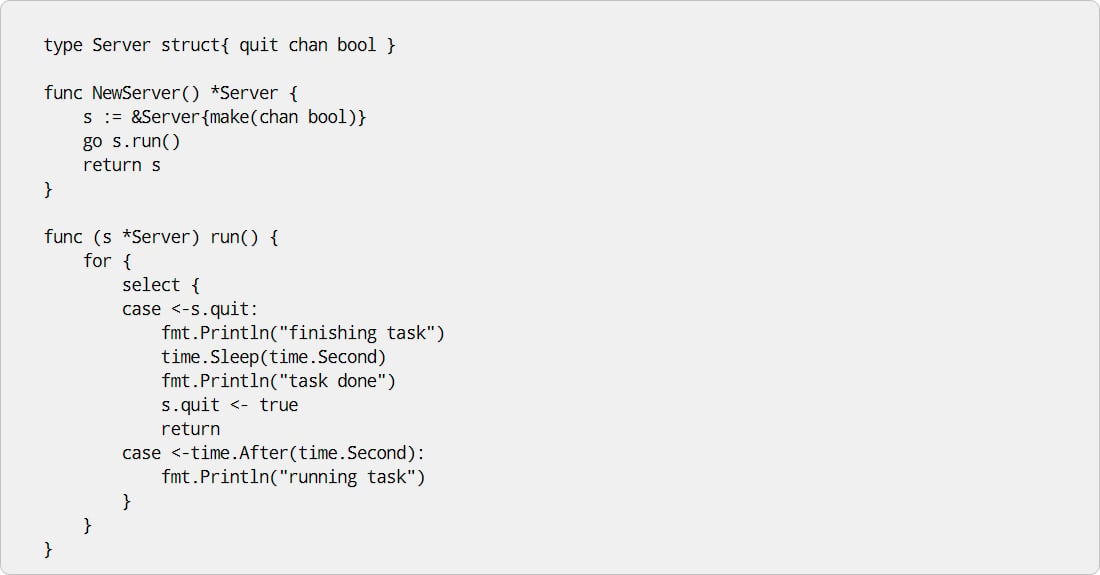
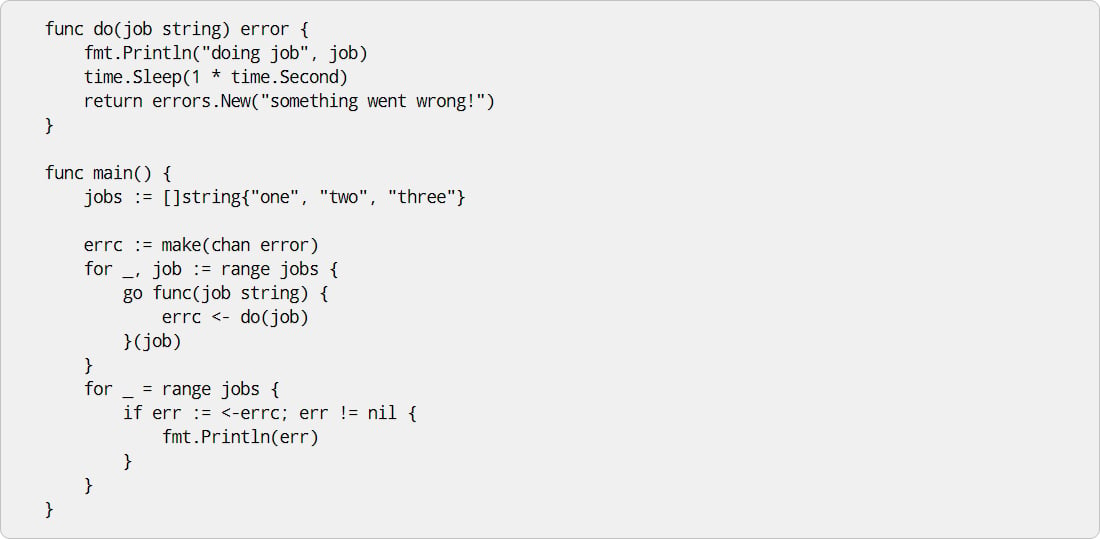
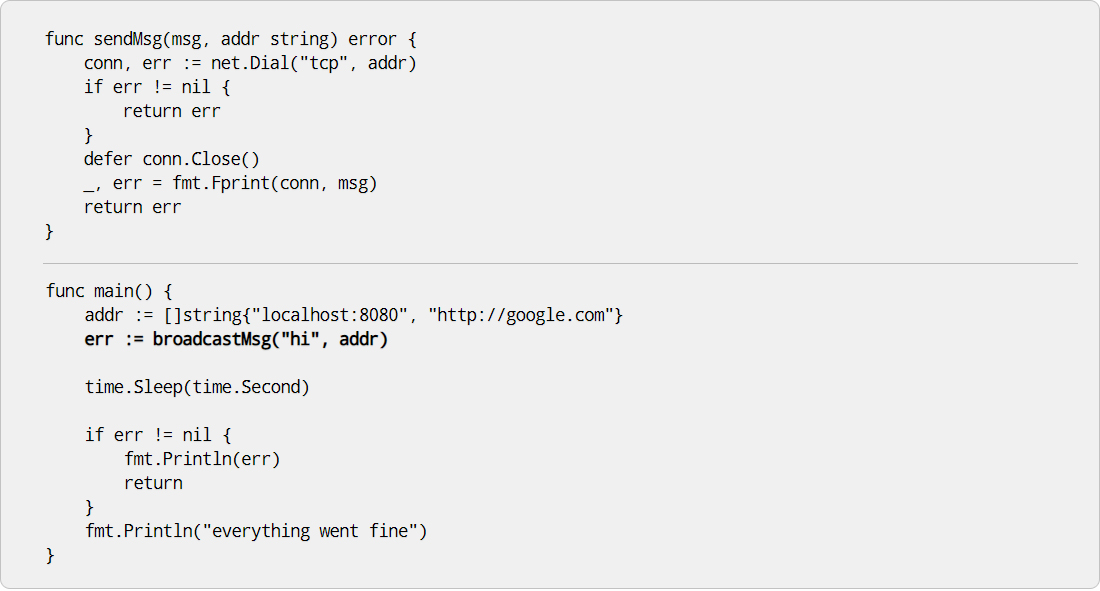
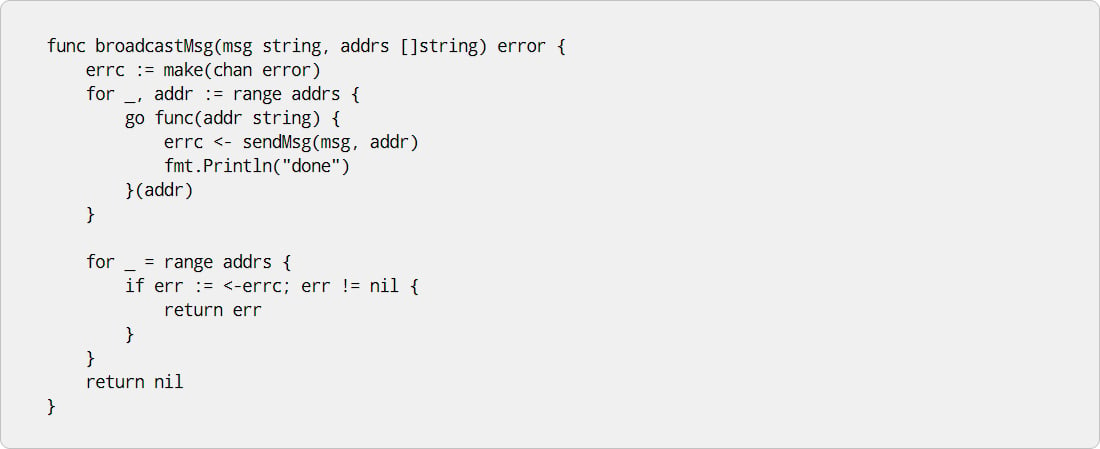
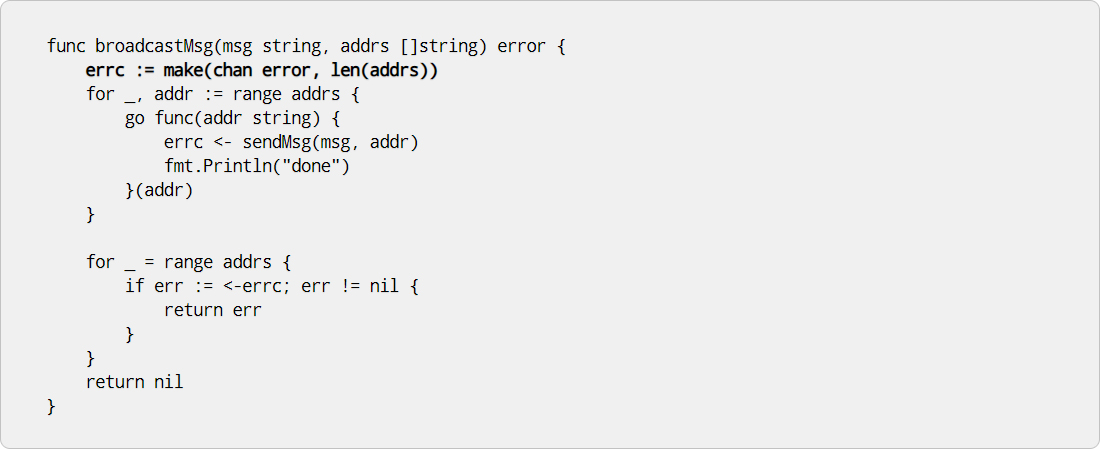
What to do if the capacity of the channel stays unpredicted?
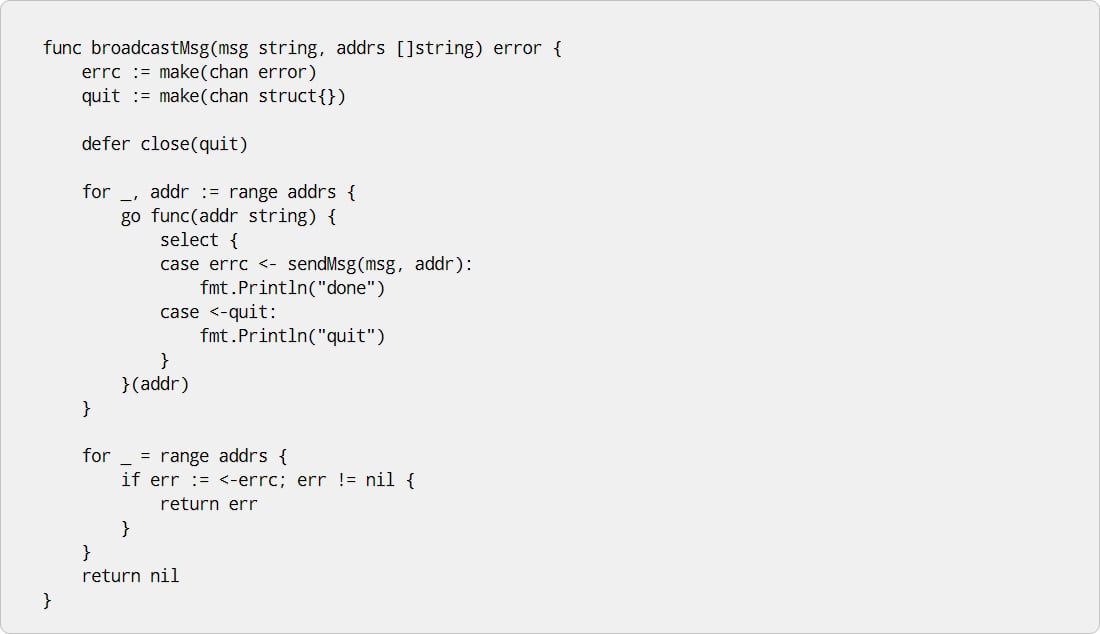
Use Go Modules
Golang released Go modules in its 1.11 version in August, where all the Go packages are versioned together into a single unit – Go modules. The go.mod file defines the Go module that consists of the module’s name and its dependencies.
You can import the Go module along with other dependencies in your project.

import (
"fmt"
"io/ioutil"
"net/http"
"os"
// Public Go Module for logging
log "github.com/sirupsen/logrus"
)
Further reference the functions in your code as shown below.
Use Artifactory Repository Layouts
On firing the command go build to build your application, binary artifacts are generated which are needed to be stored. Thus, for that, you need a binaries repository manager as Artifactory so that the build process can push the results to the repo.
You can use Artifact’s generic repositories for such intermediate artifacts. Structure the repositories in a proper and smart way to control the flow of binaries through the developing, testing, and production phase with separate repositories.
Keep your tests in a different package
Except for test.go files, Go suggests it to be as the same package if the files belong to the same folder. Keeping the file outside the folder will permit you to write tests as the real user of the package. Within the folder, you cannot fiddle around with the code. Thus, keeping your tests in a different package gives you the freedom of changing the way you want without compromising the test code.
A different file for internal tests
If you wish to test the internal files separately, it is better to keep them in a different file with the suffix ‘_internal_test.go’. Compare to interface tests, internal tests are more fragile but somehow it’s a good practice to ensure the working of components.
Write table-driven tests
Without depending on external package anonymous structs and composite literals helps us to write table tests easily and without much hustle.
The below Fib function will allow to set up the ranges of tests.

var fib = []struct {
n int // input
expected int // expected result
}{
{1, 1},
{2, 1},
{3, 2},
{4, 3},
{5, 5},
{6, 8},
{7, 13},
}
If you want to do something, then doing it the right way will give you out-of-the-box results. When coding a Go program, as you follow these Go best practices, you will see the efficiency of your program improving. Obviously, it is not easy to implement all the Golang tips because I know it takes time to adapt to changes.
If you have a mind-boggling Golang project idea, then our elite Golang developers can make your wish a successful profit-earning project execution. At Bacancy, we follow the Agile methodology for every project development, which keeps failure at bay.
Your Success Is Guaranteed !
We accelerate the release of digital product and guaranteed their success
We Use Slack, Jira & GitHub for Accurate Deployment and Effective Communication.